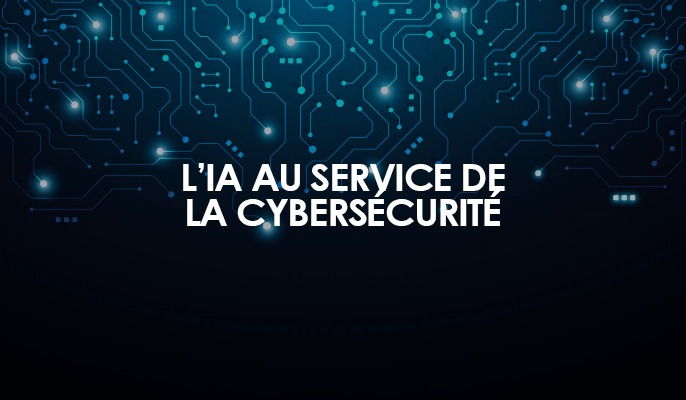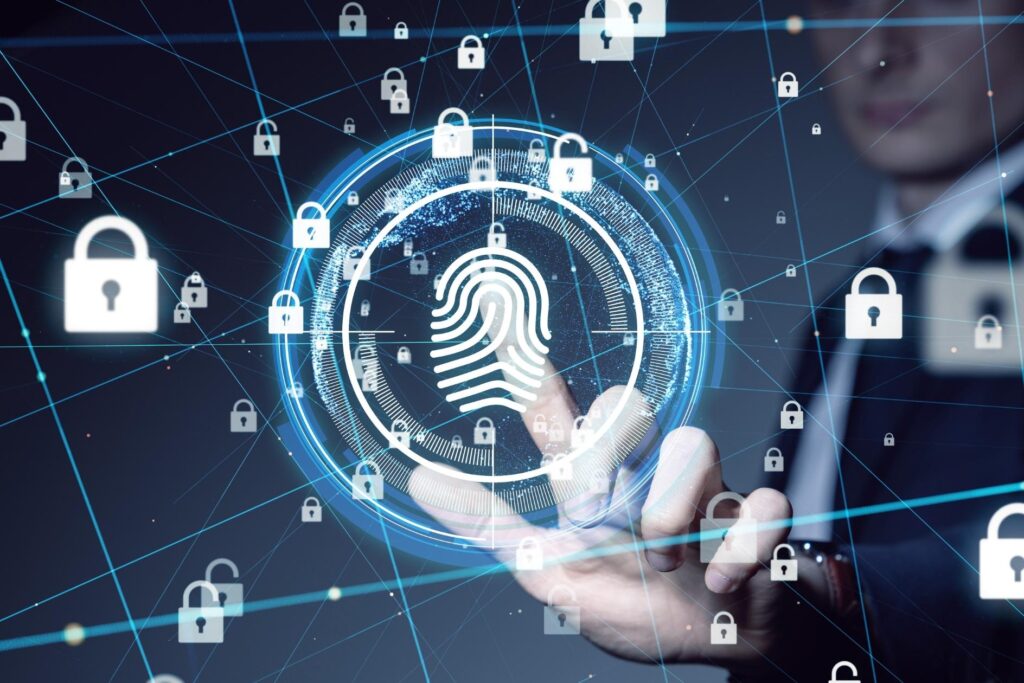
I. Introduction
The revolution in mobile development and web development has profoundly altered our relationship with technology. Once separate tools, mobile devices and websites have become essential extensions of our daily lives. This expansion has created omnipresent interconnection, reshaping our behaviors, our interactions and our access to information. However, this transformation also exposed our data to considerable risks. The proliferation of applications and platforms has created increasing interdependence, making information easier to access while presenting potential gaps in data and communications security.
The rapid evolution of mobile and web development has been accompanied by an exponential increase in cyber threats. These increasingly sophisticated threats have placed security at the forefront of concerns. Cyberattacks, ranging from hacking attempts to malware, have highlighted the growing vulnerability of users, sensitive data and infrastructure. This vulnerability has eroded user confidence, highlighting the imperative need to ensure end-to-end security to preserve the integrity of exchanges and information.
This in-depth discussion aims to explore the fundamental transformation that security has brought about within these vital areas. We will dive into the heart of this revolution, revealing the challenges intrinsic to this changing technological environment. Our exploration will revolve around the opportunities, challenges and security imperatives to establish a solid foundation in mobile and web development. It is crucial to adopt a proactive approach to ensure reliable, sustainable and secure development.
II. Current Web and Mobile Security Landscape

A. Analysis of emerging and persistent threats in the sector
Examining emerging threats highlights the ever-changing tactics of cybercriminals. New forms of attacks, such as targeted spear-phishing, exploitation of human weaknesses, and sophisticated malware, highlight the need for increased vigilance. To address these threats, businesses must adopt ongoing awareness and training policies for their staff, strengthen email and network security, and implement proactive detection solutions.
B. Study of the impacts of recent cyberattacks on trust and security
Recent cyberattacks have caused considerable financial losses and damaged user confidence. To restore this trust, companies must improve transparency around security incidents, strengthen communication with users, and invest in advanced security technologies, such as two-factor authentication and continuous monitoring tools to detect activity. suspicious.
C. Assessment of current data and user protection measures
The assessment of existing security measures must be comprehensive. This includes regularly auditing encryption protocols, data backups and recovery, implementing strict access control policies, as well as regularly tested incident response plans. Additionally, integrating emerging technologies such as artificial intelligence for threat analysis can proactively strengthen defenses.
Lire également : Sécurité dans le développement mobile : les mesures à prendre
III. Internet of Things (IoT) and Web and Mobile Security

A. Growing integration of IoT devices and associated security challenges
The rapid expansion of connected devices creates increasing security complexity. The diversity of connected equipment, from domestic devices to industrial infrastructures, multiplies the potential access points for cyberattacks. Managing sensitive data, securing wireless connections and securing software updates are major challenges. To address these challenges, a proactive approach is essential, including constant monitoring of networks, adoption of rigorous security policies and use of advanced detection tools to prevent attacks.
B. Role of security standards in the development of connected devices
Security standards are the foundation of reliable IoT devices. Robust user authentication, data encryption and the application of standardized security protocols are crucial. Adopting consistent practices strengthens protection against emerging threats. Additionally, certification of compliance with security standards can build user confidence and encourage broader adoption of these connected devices.
C. Measures to strengthen security in an expanding IoT ecosystem
To ensure effective security in this dynamic environment, a comprehensive approach is essential. This includes adopting advanced solutions, such as IoT-specific firewalls, proactive management of security updates, and user education programs to promote good security practices. Additionally, collaboration between manufacturers, regulatory authorities and security experts is essential to develop robust security standards, anticipate emerging threats and implement appropriate prevention strategies.
IV. Artificial Intelligence and Security

A. Using AI to strengthen the security of mobile and web applications
The integration of Artificial Intelligence (AI) into the security of mobile and web applications presents remarkable opportunities. Using advanced learning algorithms, AI enables proactive detection of suspicious activities, improving responsiveness to threats. For example, AI systems can analyze abnormal traffic patterns, anticipating potential attacks. The use of AI helps strengthen defense mechanisms, thereby reducing risks and increasing resilience to emerging threats.
B. Analysis of the potential risks and benefits of AI in security
The application of AI in security has major benefits, such as advanced threat detection, dynamic adaptation to sophisticated attacks, and automation of security processes. However, it is crucial to carefully evaluate these benefits while balancing potential risks, such as flaws in AI model training data, algorithmic bias, and privacy concerns. For informed use, it is essential to continuously monitor and control AI models to minimize these risks.
C. Ethical implications of using AI in data security
Integrating AI into data security raises profound ethical questions. Guaranteeing the transparency of AI processes, establishing accountability for decisions made by algorithms, and protecting user privacy are essential issues. The establishment of robust ethical regulations and guidelines is crucial for the ethical and responsible use of AI. This includes periodic assessments of ethical impacts, awareness of confidentiality issues, and the establishment of control mechanisms to prevent any inappropriate use of these technologies.
V. Augmented (AR) and Virtual Reality (VR): Security Challenges

A. Expansion of AR/VR applications and associated vulnerabilities
The exponential growth of augmented and virtual reality applications exposes them to unique vulnerabilities. These immersive environments open up new horizons for attacks, including the collection and manipulation of sensitive data, potentially vulnerable interactions between users and virtual environments, as well as the threat of manipulation of the perception of reality. These challenges require a proactive approach to identify, assess and counter these vulnerabilities, thereby ensuring user security and privacy.
B. Security Strategies for Immersive and Interactive Experiences
Specific security strategies are essential for these immersive experiences. These include deploying advanced encryption techniques to protect data integrity, developing strong authentication and authorization mechanisms to ensure secure interactions, and continuous monitoring to detect and counter malicious activity. within these virtual environments. It is also imperative to actively educate users to adopt secure behaviors within these environments.
C. Integrating security into AR/VR development
Security must be a central concern from the initial phases of the development of augmented and virtual reality applications. Integrating security measures by design involves proactive risk prevention and guarantees a reliable and secure user experience. This involves security-oriented software design, the integration of robust security protocols, and rigorous testing to ensure resilience against potential threats.
VI. Security of Mobile Financial Transactions

A. Evolution of security practices for mobile financial transactions
The evolution of security practices for mobile financial transactions is manifested by continued adaptation in the face of increasing threats. Advancements include advanced authentication methods, such as multi-factor authentication and biometrics, enhancing transaction security. At the same time, sophisticated encryption protocols are deployed to ensure the confidentiality of financial data, ensuring a secure environment for transactions on mobile platforms.
B. Security mechanisms for mobile payments and banking transactions
Security mechanisms for mobile payments and banking transactions rely on advanced technologies. Data tokenization, for example, substitutes sensitive information with encrypted tokens to ensure the confidentiality of financial data. Behavioral analytics is also crucial, enabling early detection of suspicious activities and providing effective fraud prevention. In addition, the rise of biometric authentication, via facial recognition or fingerprints, strengthens user identification, guaranteeing secure transactions.
C. The impact of security developments on user confidence
Advances in security play a crucial role in user confidence in mobile financial transactions. Strong security systems build user confidence by ensuring sensitive financial data is protected. These advances strengthen the credibility of mobile financial services, creating a feeling of reliability and boosting user confidence in the continued use of these platforms.
VII. Data Privacy and Regulation

A. In-Depth Discussion on Data Protection and Regulatory Compliance
A thorough analysis of current regulations, such as GDPR, is essential to understand their impact on data protection. This includes the need to put in place data management practices that comply with these rules, including in terms of consent, transparency in data collection and processing, as well as security measures to protect sensitive information. Additionally, regular audits and privacy policy updates are recommended to stay compliant.
B. Impact of Privacy Laws and Regulations on Mobile Development
Privacy laws and regulations significantly influence the mobile app development process. It is crucial to integrate privacy protection from the earliest design stages. Developers should adopt a “privacy by design” approach, implementing privacy features, such as clear consent settings and personalized privacy controls for users.
C. Challenges for Developers Regarding Regulatory Compliance
Developers face practical challenges in maintaining compliance. This involves establishing transparent data collection processes, securely storing information, and implementing robust user consent mechanisms. They must also stay informed of regulatory developments and commit to regular updates of practices to ensure data security and privacy throughout the application lifecycle.
VIII.Biometric Security and Advanced Authentication

A. Integration of biometric technologies to strengthen authentication
Biometric technologies, such as facial recognition, fingerprint and voice recognition, provide advanced authentication methods. Their main advantage lies in the creation of unique identification systems that are difficult to counterfeit. These methods enhance security by providing more reliable and robust authentication, simplifying access while reducing the risks associated with fraud or identity theft.
B. Assessing the Benefits and Risks of Biometric Security
Although biometric technologies offer a high level of security, concerns persist. In addition to concerns about privacy, the reliability of biometric data and the possibility of false identification remain challenges. It is crucial to continuously assess the potential risks of hacking or circumvention attempts to ensure a secure implementation.
C. Applications and limits of these technologies in mobile development
The practical applications of biometric technologies in mobile development are diverse. They are widely used to secure access, authorize payments and protect sensitive information. However, their integration encounters limits, particularly in terms of costs, hardware and software compatibility, and security standards. It is crucial to develop solutions that provide a smooth user experience while ensuring maximum security.
IX. Responsibility of Developers and Companies
A. Importance of security awareness for developers
Security awareness for developers is fundamental to anticipating and countering emerging threats. It includes in-depth training on emerging cybersecurity trends, common vulnerabilities, and secure development best practices. By encouraging a culture of vigilance, developers are better prepared to identify, prevent, and resolve security issues as they arise, thereby increasing application robustness.
B. Companies’ commitment to protecting user data
Companies’ commitment to data security involves implementing comprehensive policies. This includes technical measures like data encryption, limiting access to sensitive information, as well as regular audits to ensure compliance with security standards. At the same time, creating a company culture that values data privacy and transparency builds user trust and solidifies the company's reputation for data protection.
C. Necessary collaboration between developers, companies and regulators
Collaboration between developers, businesses and regulators is a key element in maintaining a high level of data security. Regulators establish legal guidelines, companies develop compliance protocols, and developers integrate them into their development processes. This collaboration ensures rigorous legal compliance and effective implementation of security standards, ensuring strong protection of user data.
X. Collaborative Cybersecurity: Partnerships and Initiatives
A. Synergy between Businesses, Governments and Organizations: A Common Front for Cybersecurity
Collaboration between businesses, governments and organizations forges a unified bastion against digital threats. This partnership transcends borders and promotes a vital exchange of information, expertise and resources to anticipate and counter cyber assaults. By joining forces, these entities create a strong barrier, strengthening security in an ever-changing digital world.
B. Innovative Initiatives for Sustainable Security in Mobile and Web Development
Innovative initiatives are flourishing to raise the level of security in mobile and web development. These dynamic programs encourage the sharing of best practices, awareness of cyber risks and the creation of common security standards. By catalyzing a continuous exchange of ideas and solutions, these collective efforts are building a more resilient digital ecosystem.
C. Towards a Secure Digital Future: The Lasting Impacts of Cybersecurity Partnerships
Exploring the long-term consequences of partnerships reveals their defining impact on the future of digital security. These alliances stimulate innovation, promote continuous monitoring of threats and propel the development of cutting-edge solutions. These advancements are redefining security standards, shaping a more resilient and secure digital future.
XI. Conclusion
In conclusion, our article highlights the complex challenges facing the web and mobile security domains in the era of AI and biometrics. Through in-depth exploration, the article highlights the growing importance of collaboration and innovative partnerships to forge a more secure digital future. As threats rapidly evolve, the need for a holistic and proactive approach to security becomes more pressing than ever. The emerging solutions, cutting-edge technologies and strategic alliances presented in this article illustrate an ever-changing landscape, where vigilance and innovation are proving to be essential pillars to ensure data protection and user privacy. By navigating beyond traditional codes, new security horizons offer a promising vision for a connected world, where digital trust is prioritized, and technological advances converge towards a more resilient and secure digital ecosystem.


